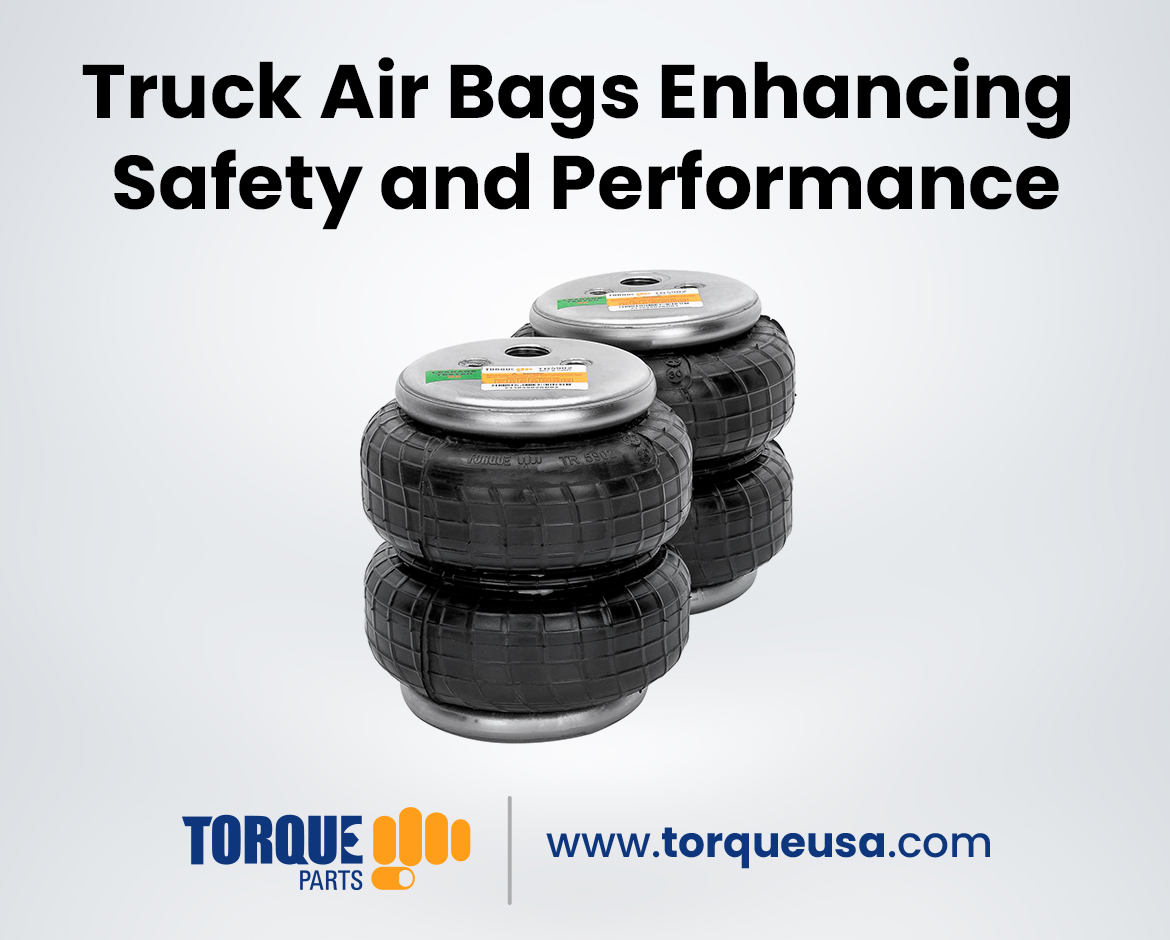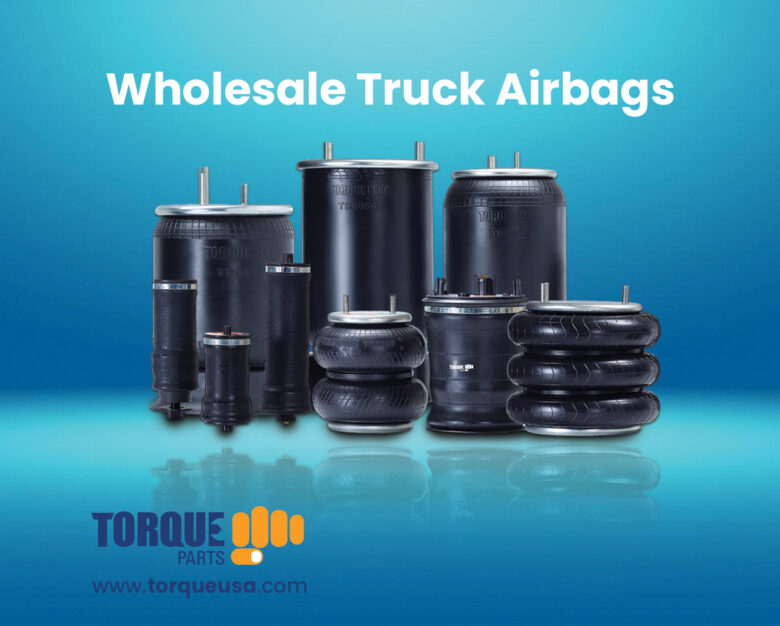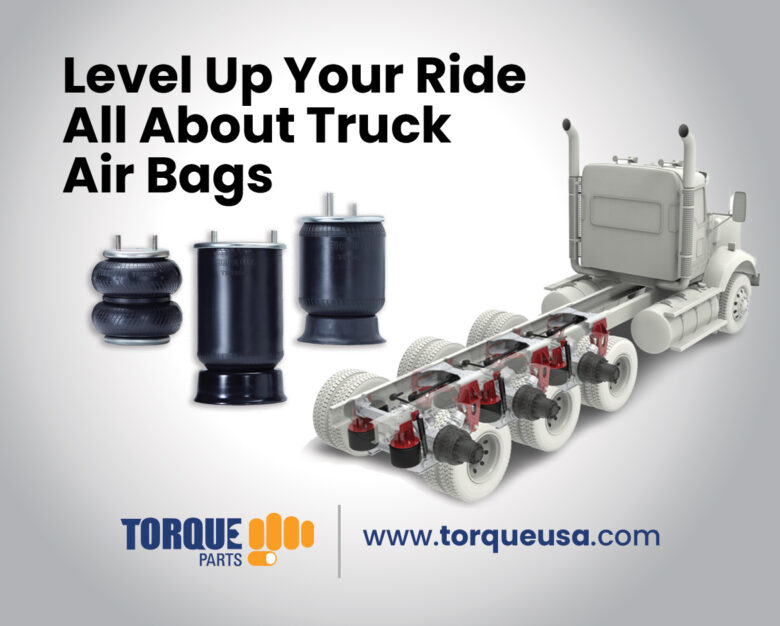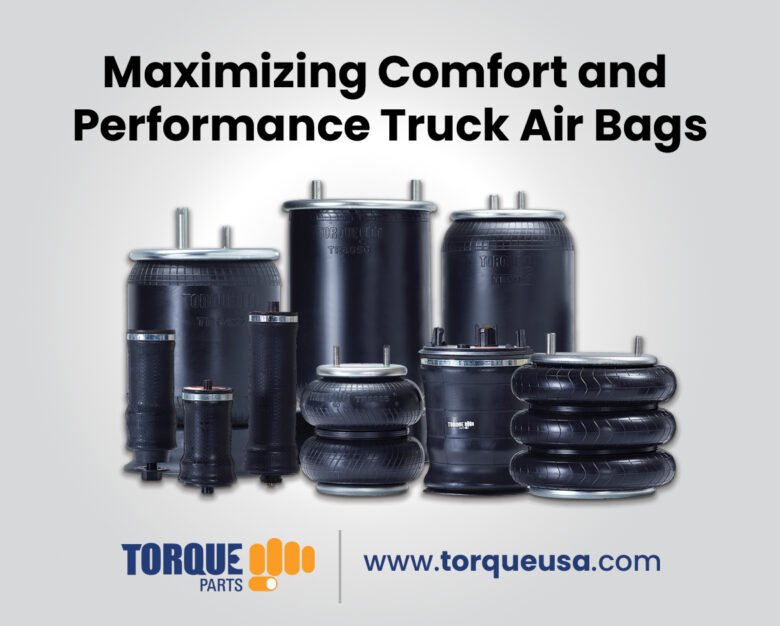
In the realm of heavy-duty vehicles, ensuring safety and performance is critical. One crucial component that significantly contributes to both aspects is the truck air bag. In this comprehensive guide, we’ll delve into the world of truck air bags, exploring their functionality, benefits, maintenance, and more.
What are Truck Air Bags?
Truck air bags, also known as air springs or air suspension systems, are pneumatic devices designed to support the weight of a vehicle and provide a smoother ride. Unlike traditional coil or leaf spring suspensions, air bags utilize pressurized air to absorb shocks and vibrations, thereby enhancing ride comfort and stability.
Types of Truck Air Bags
There are two primary types of truck air bags: convoluted and sleeve.
- Convoluted Air Bags: These feature a bellows-like design and are commonly used in heavy-duty trucks and trailers.
- Sleeve Air Bags: Also known as rolling lobe air springs, these have a cylindrical shape and are often found in passenger vehicles and light trucks.
Importance of Truck Air Bags
Safety Benefits
Truck air bags play a crucial role in improving vehicle stability, especially during cornering and braking maneuvers. By maintaining optimal ride height and reducing body roll, they enhance overall control and handling, thus minimizing the risk of accidents.
Economic Benefits
In addition to safety, truck air bags offer economic advantages. Their ability to adjust to varying loads helps prevent premature tire wear and reduces fuel consumption, leading to cost savings for truck owners in the long run.
How Truck Air Bags Work
Truck air bags operate on a simple yet effective principle: the compression of air. When the vehicle encounters bumps or uneven terrain, the air bags compress to absorb the shock, providing a smoother ride for the driver and passengers.
Inflation Process
Air bags are typically inflated using an onboard air compressor or external air source. The inflation level can be adjusted based on the vehicle’s load and road conditions, providing customized support as needed.
Integration with Suspension Systems
Truck air bags work in conjunction with the vehicle’s suspension system to distribute weight evenly and maintain proper ride height. This integration ensures optimal performance and comfort, regardless of the driving conditions.
Maintenance and Care Tips
To ensure the longevity and effectiveness of truck air bags, proper maintenance is essential.
Regular Inspections
Inspect air bags regularly for signs of wear, damage, or leaks. Address any issues promptly to prevent further damage to the suspension system.
Proper Inflation
Maintain the correct air pressure according to the manufacturer’s recommendations. Over or under-inflated air bags can affect ride quality and safety.
Common Issues and Troubleshooting
Despite their durability, truck air bags may encounter issues over time.
Air Leaks
Leaks in the air bag or air lines can lead to reduced performance and stability. Inspect for leaks and repair or replace damaged components as necessary.
Over-Inflation
Excessive air pressure can cause the air bag to burst or become damaged. Monitor inflation levels regularly and adjust as needed to prevent over-inflation.
Upgrading Truck Air Bags
Enhanced Performance
Consider upgrading to advanced air bag systems with features such as adjustable damping and automatic leveling for improved performance and comfort.
Advanced Features
Some modern truck air bags offer additional features like self-leveling capabilities and integrated electronic controls, further enhancing ride quality and safety.
Comparison with Other Suspension Systems
Advantages and Disadvantages
While truck air bags offer several benefits, they also have limitations compared to traditional suspension systems. Consider factors such as cost, maintenance requirements, and performance when choosing the right suspension system for your vehicle.
Choosing the Right Truck Air Bags
Considerations
When selecting truck air bags, consider factors such as vehicle weight, load capacity, and intended usage. Choose a reputable brand known for quality and reliability.
Installation Process
DIY vs. Professional Installation
While some truck owners may opt for DIY installation, professional installation is recommended for optimal results. A qualified technician can ensure proper fitment and integration with the existing suspension system.
Steps Involved
The installation process typically involves removing the old suspension components, mounting the new air bags, and connecting them to the vehicle’s air supply system. Follow the manufacturer’s instructions carefully for a seamless installation.
Cost Analysis
Initial Investment
The cost of truck air bags varies depending on the brand, model, and features. While the initial investment may seem high, the long-term benefits in terms of safety, performance, and fuel efficiency outweigh the upfront costs.
Long-Term Savings
Consider the potential savings in terms of reduced maintenance, fuel consumption, and tire wear when evaluating the cost-effectiveness of truck air bags.
Case Studies
Success Stories
Explore real-life examples of truck owners who have experienced significant improvements in safety and performance after upgrading to air bag suspension systems.
Real-Life Examples
From commercial fleets to recreational vehicles, truck air bags have proven to be a valuable investment for drivers across various industries.
Future Trends in Truck Air Bags
Technological Advancements
As technology continues to evolve, expect to see advancements in truck air bag systems, including integration with autonomous driving technology and predictive maintenance features.
Environmental Impact
Efforts to reduce emissions and improve fuel efficiency will drive the development of eco-friendly air bag materials and manufacturing processes.
Conclusion
Truck air bags play a vital role in enhancing safety, performance, and comfort for heavy-duty vehicles. With proper maintenance and care, they can provide years of reliable service, making them a worthwhile investment for truck owners.
FAQs
1- Are truck air bags compatible with all types of trucks?
- While many truck air bags are designed to be compatible with a wide range of vehicles, it’s essential to ensure compatibility with your specific truck model and suspension system. Consult with a trusted manufacturer or technician for guidance.
- 2- Can I install truck air bags myself, or do I need professional help?
-
-
- While DIY installation is possible for some experienced truck owners, professional installation is recommended to ensure proper fitment and integration. A qualified technician can also provide valuable insights and ensure optimal performance.
-
- 3- How often should I inspect my truck air bags?
-
-
- It’s advisable to inspect your truck air bags regularly, ideally as part of routine maintenance checks. Look for signs of wear, damage, or leaks and address any issues promptly to prevent further damage to the suspension system.
-
- 4- Do truck air bags require special maintenance?
-
-
- Truck air bags generally require minimal maintenance beyond regular inspections and proper inflation. However, it’s essential to follow the manufacturer’s recommendations for maintenance intervals and procedures to ensure optimal performance and longevity.
-
- 5- Can upgrading to truck air bags improve my vehicle’s towing capabilities?
-
- Upgrading to truck air bags can enhance your vehicle’s towing capabilities by providing additional support and stability. However, it’s essential to choose the right air bag system for your specific towing needs and follow proper installation procedures to maximize performance and safety.
For detailed information, you can contact us at Truck Air Bags




